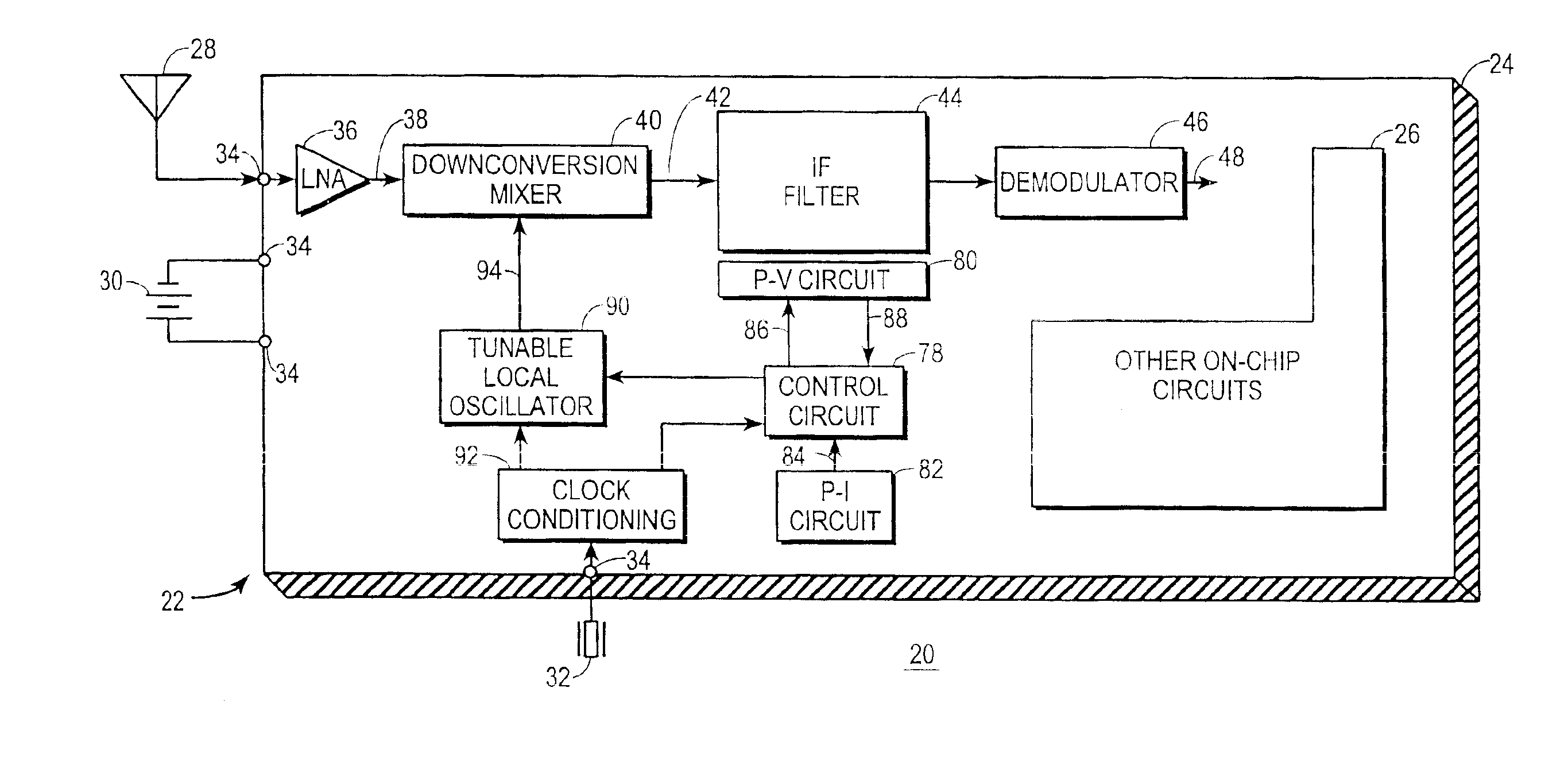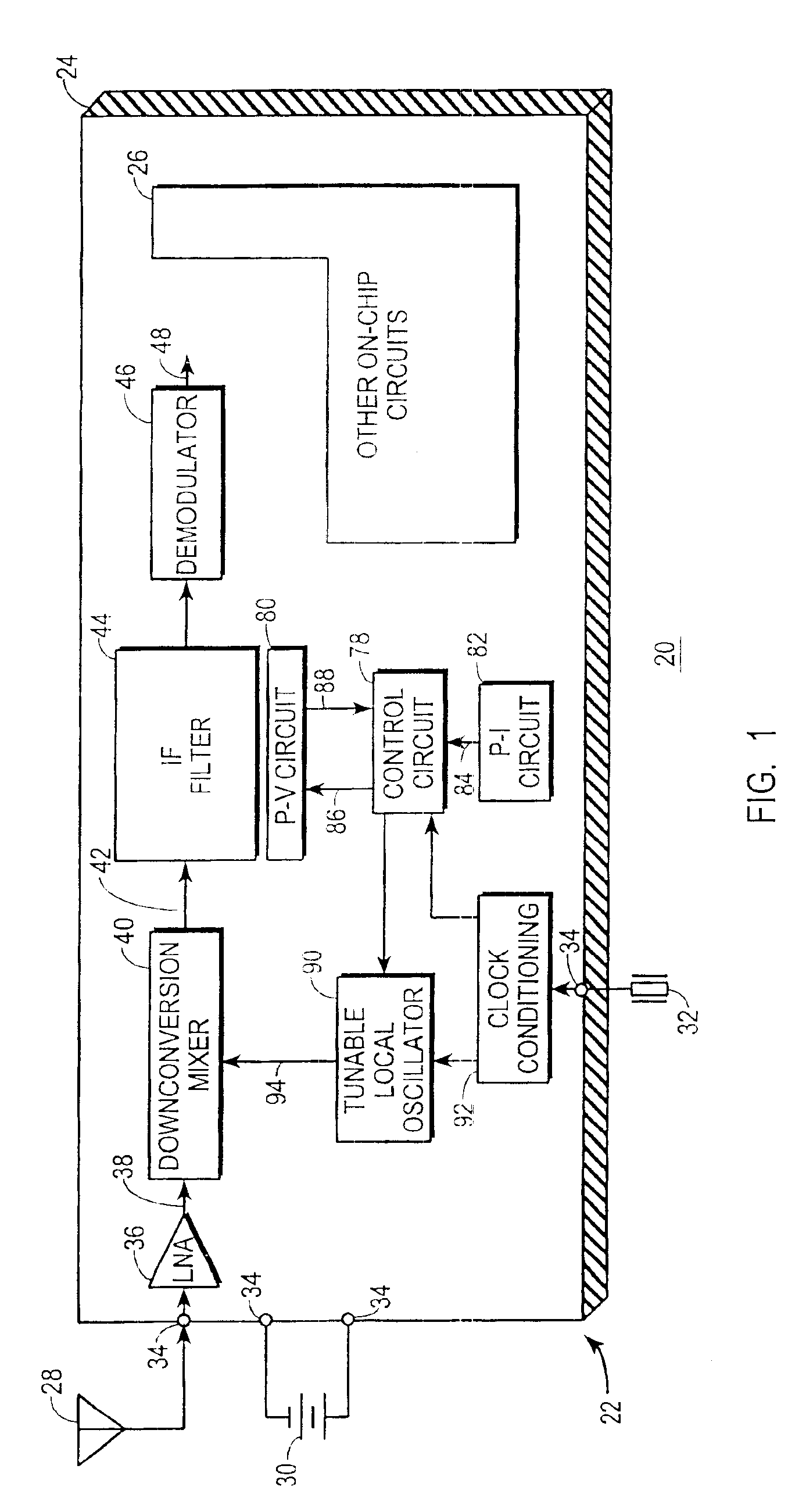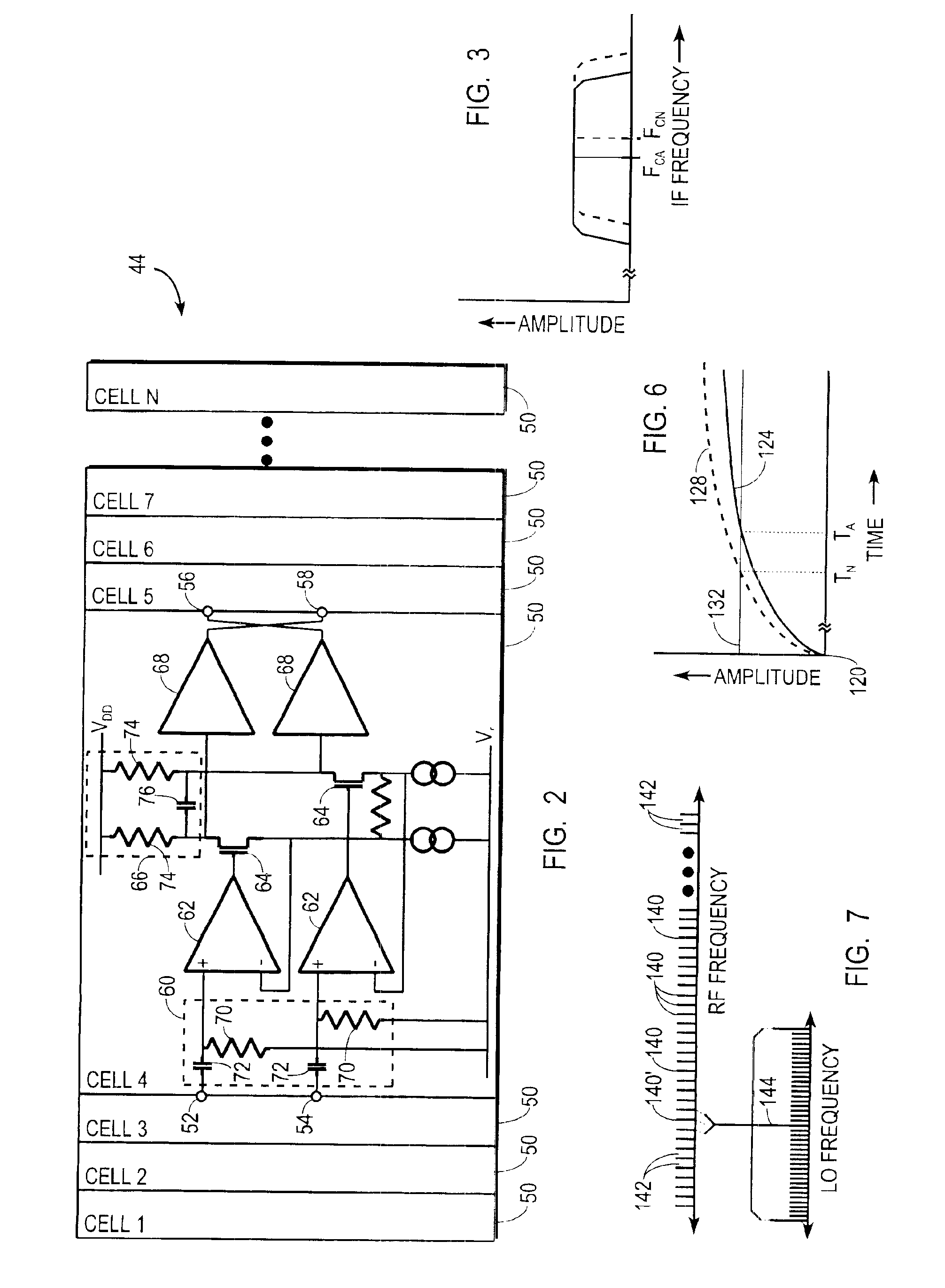Communications receiver with integrated IF filter and method therefor
a technology of communication receiver and filter, applied in the field of radio frequency (rf) communication receiver, can solve the problems of increasing the number of off-chip components, consuming more power, and particularly undesirable use of off-chip components, and achieve the effect of small chip die area and low power
- Summary
- Abstract
- Description
- Claims
- Application Information
AI Technical Summary
Benefits of technology
Problems solved by technology
Method used
Image
Examples
Embodiment Construction
[0019]FIG. 1 shows a block diagram of a communications device 20 configured in accordance with the teaching of the present invention. Communications device 20 includes a radio-frequency (RF) receiver 22, which desirably has a highly integrated architecture with a majority of the receiver components being formed on a common semiconductor substrate 24. In addition to receiver 22, communications device 20 may include other circuits 26 formed on substrate 24. Other circuits 26 may include a modulator / transmitter, baseband processing circuits, and the like. Portable communications devices, such as wireless modems, cordless telephones, pagers, cellular telephones, radios, and the like, may benefit from communications device 20 due to its low power consumption and minimal requirements for implementation space, including semiconductor die area. However, communications device 20 is not limited to use in portable applications.
[0020]An antenna 28, a power source 30, and a crystal 32 couple to ...
PUM
 Login to View More
Login to View More Abstract
Description
Claims
Application Information
 Login to View More
Login to View More - R&D
- Intellectual Property
- Life Sciences
- Materials
- Tech Scout
- Unparalleled Data Quality
- Higher Quality Content
- 60% Fewer Hallucinations
Browse by: Latest US Patents, China's latest patents, Technical Efficacy Thesaurus, Application Domain, Technology Topic, Popular Technical Reports.
© 2025 PatSnap. All rights reserved.Legal|Privacy policy|Modern Slavery Act Transparency Statement|Sitemap|About US| Contact US: help@patsnap.com



